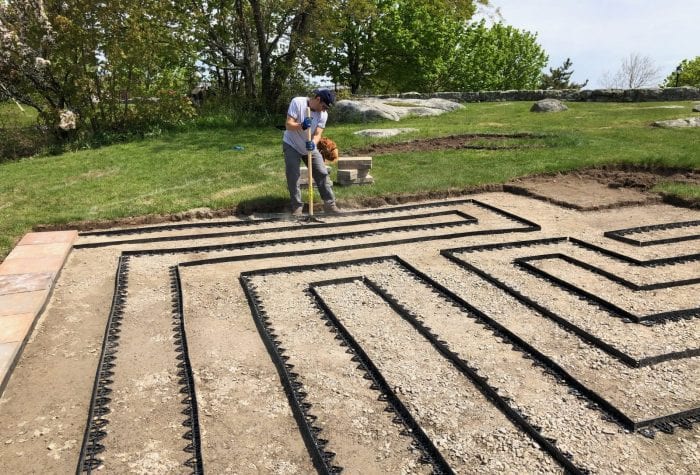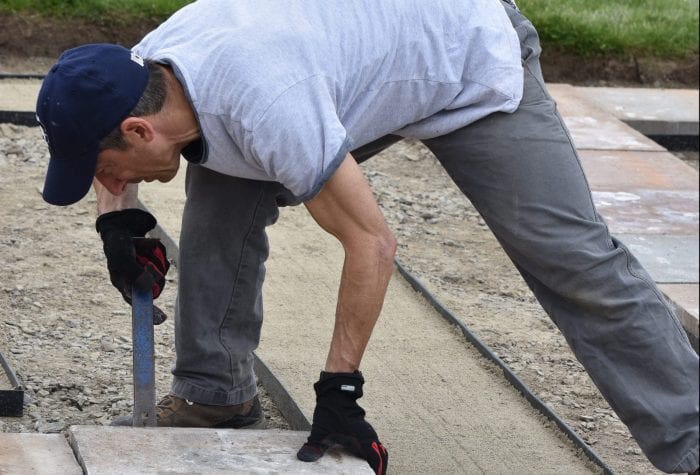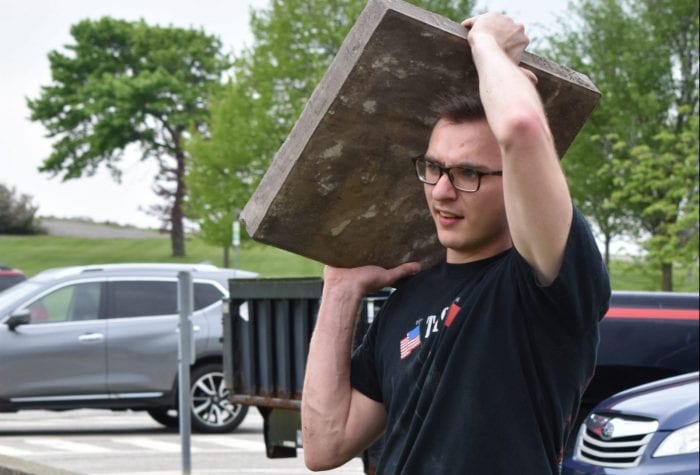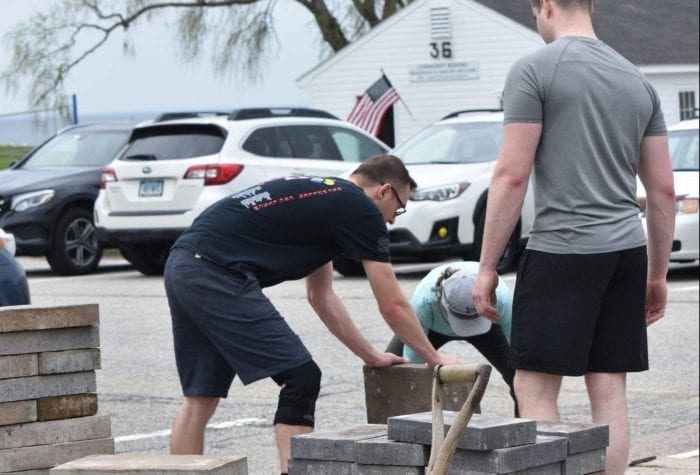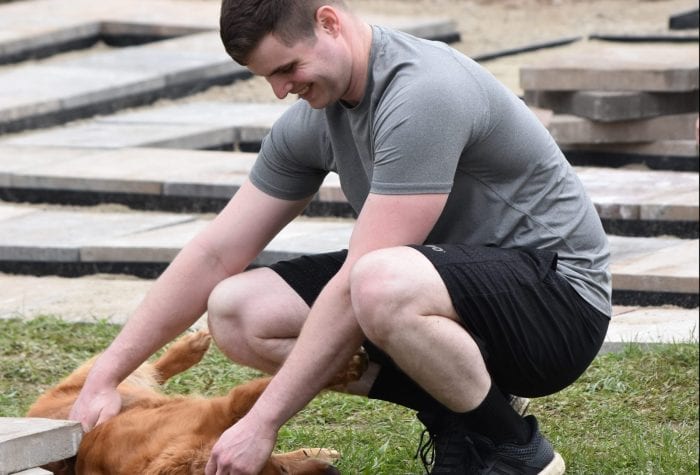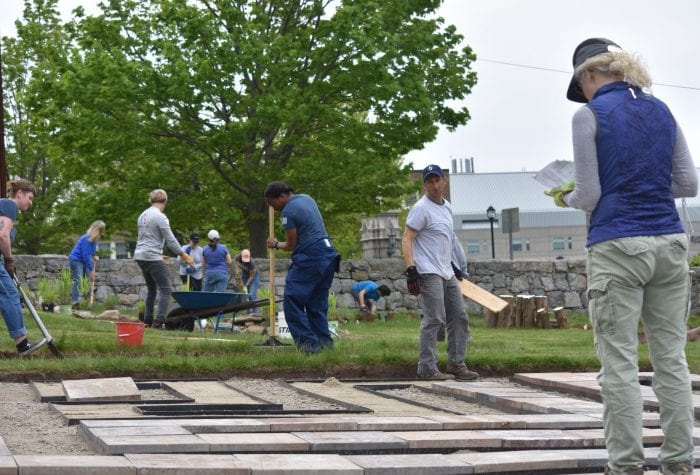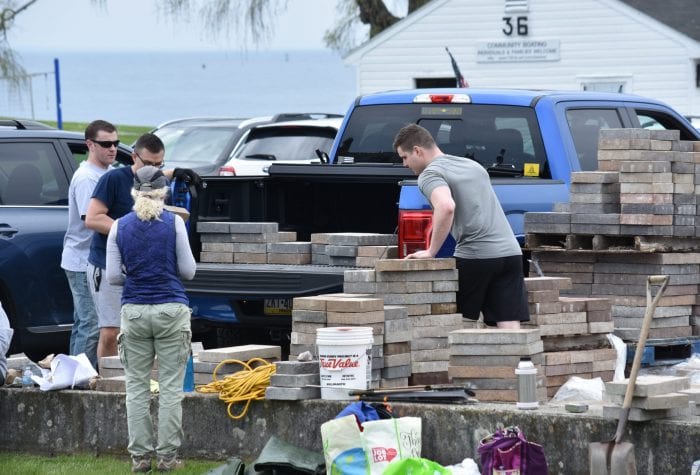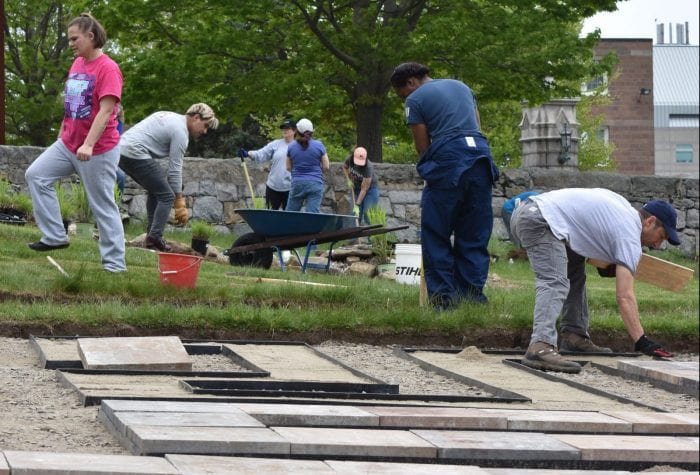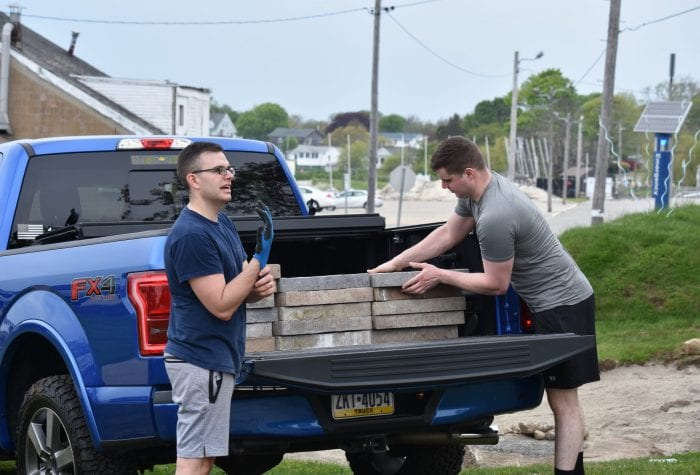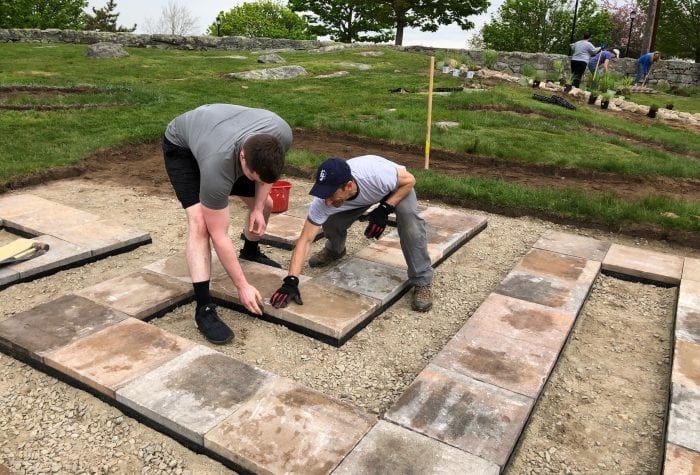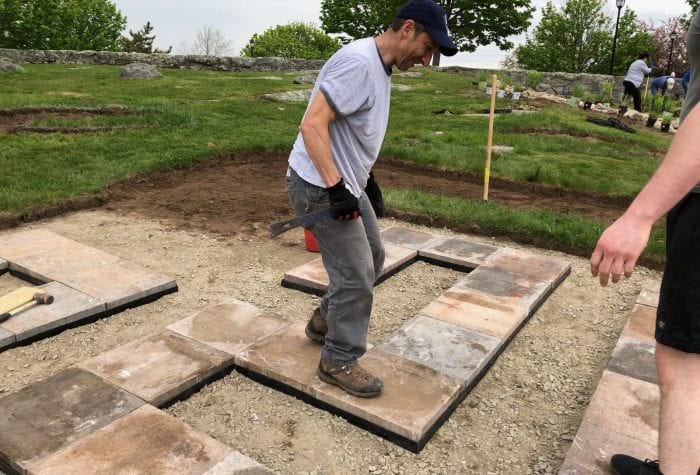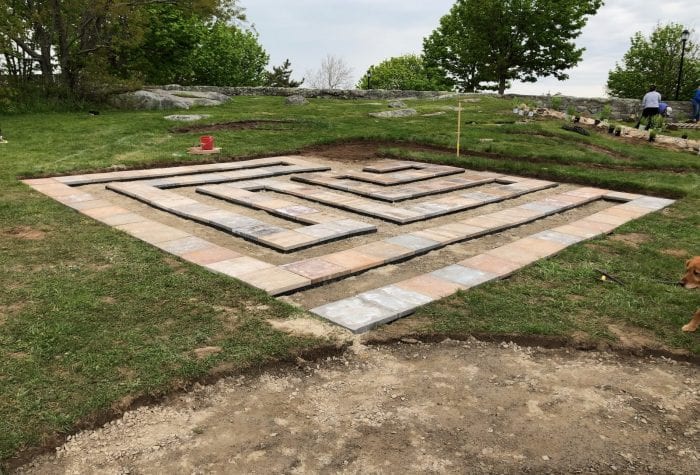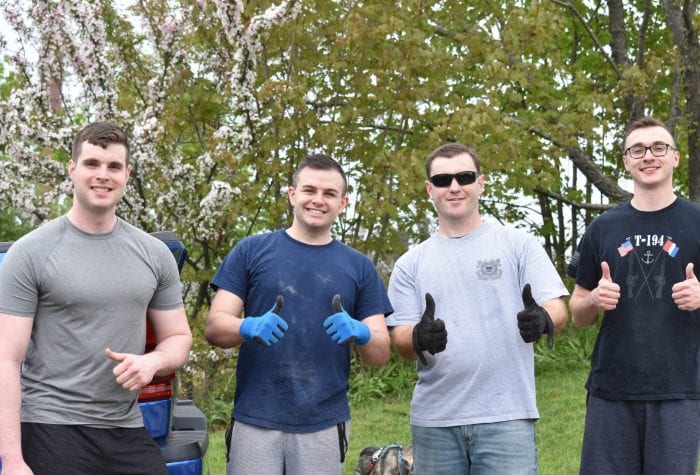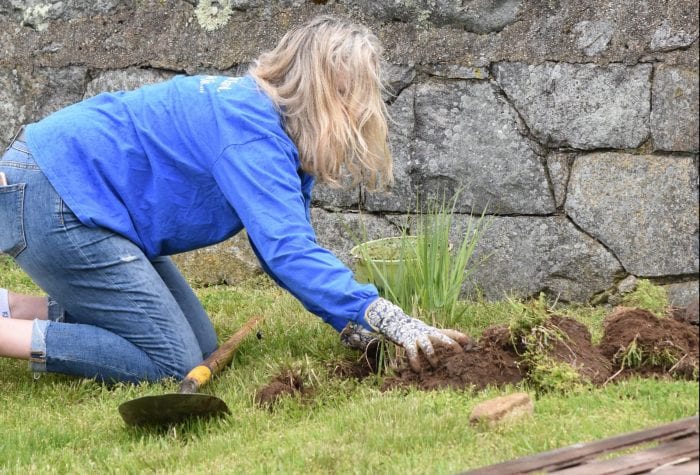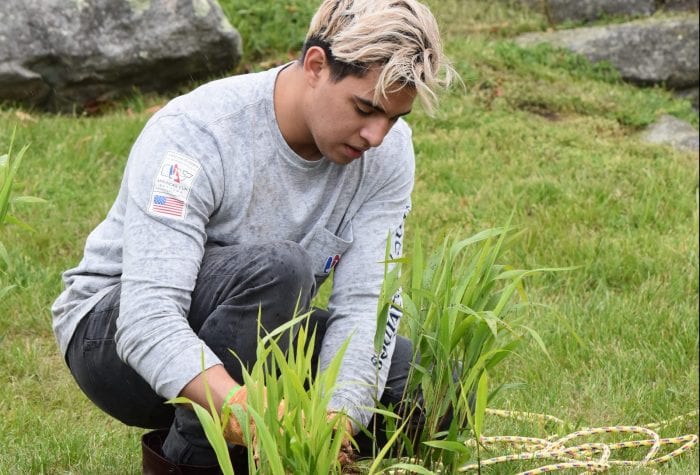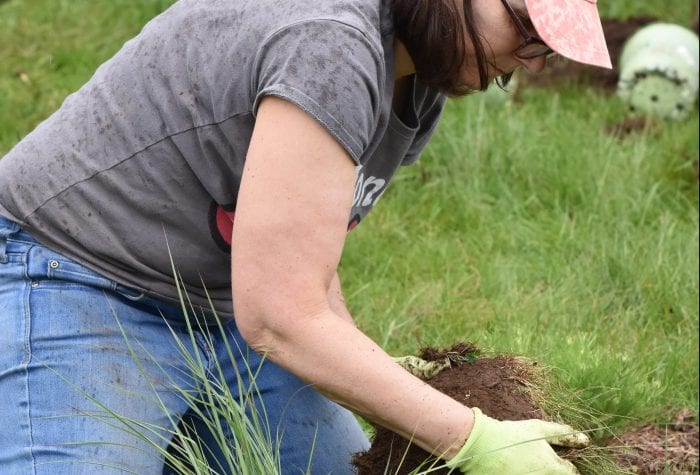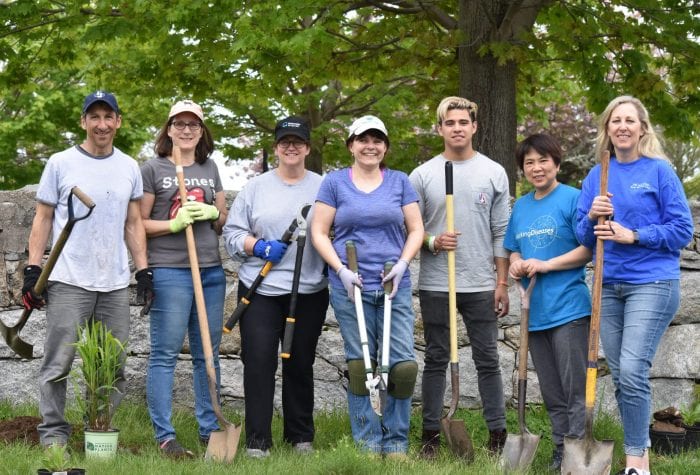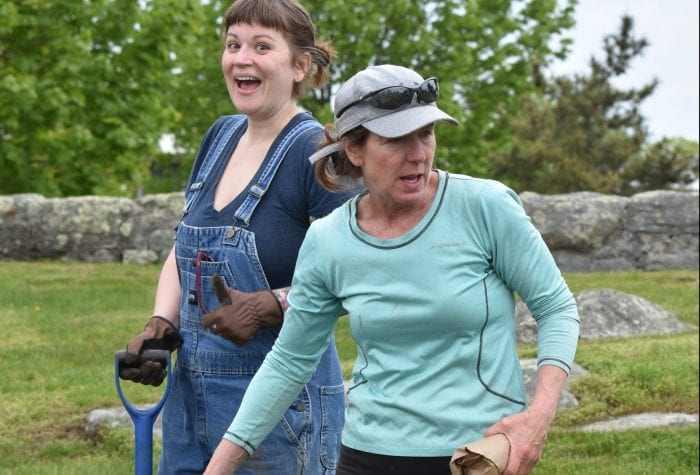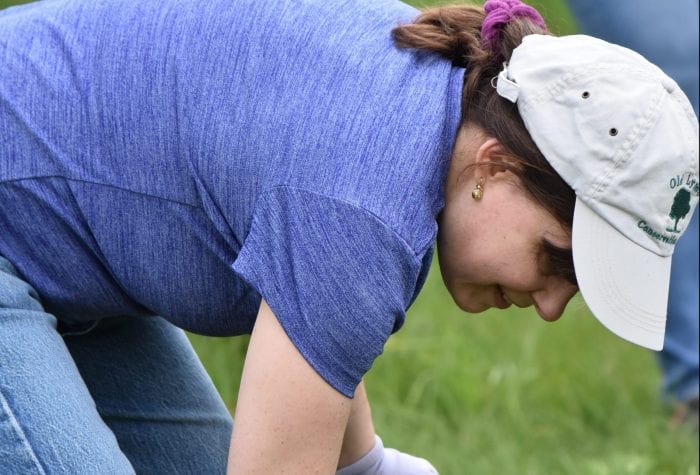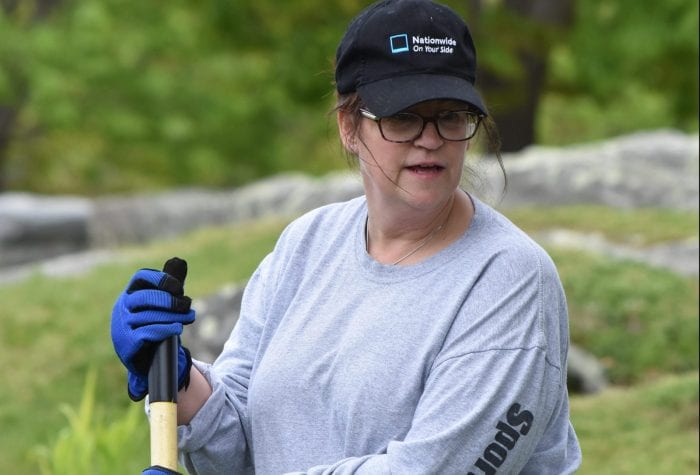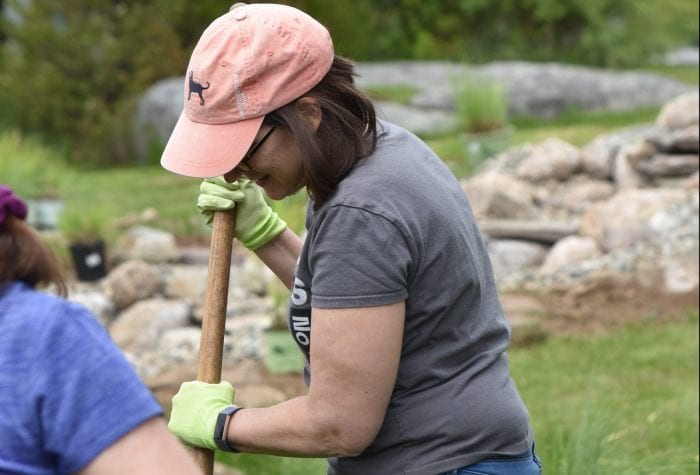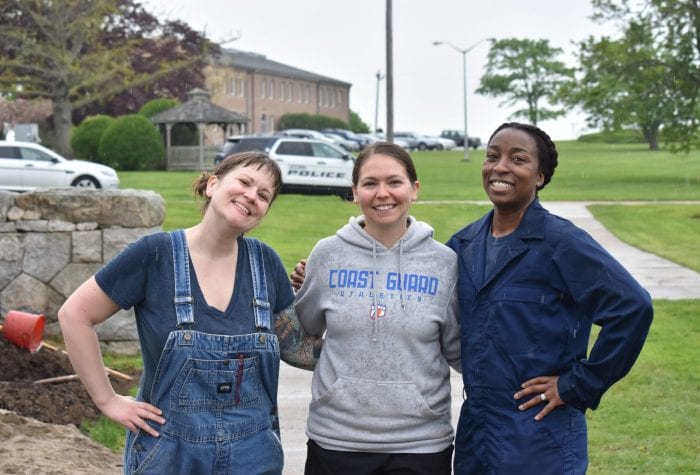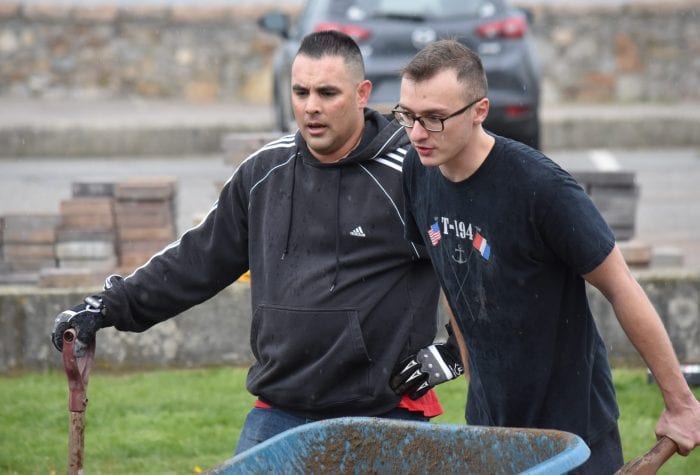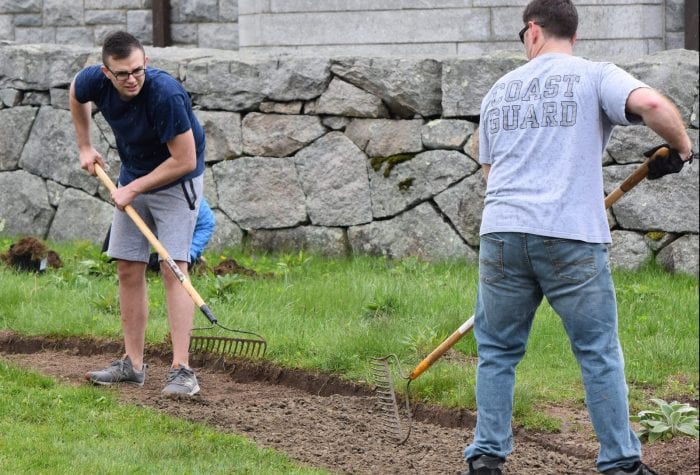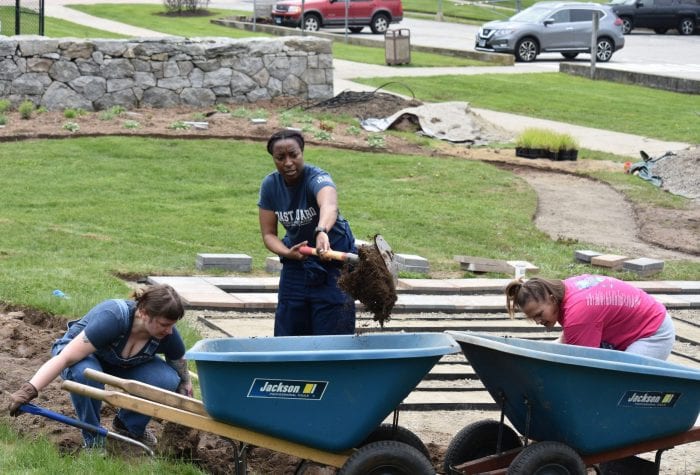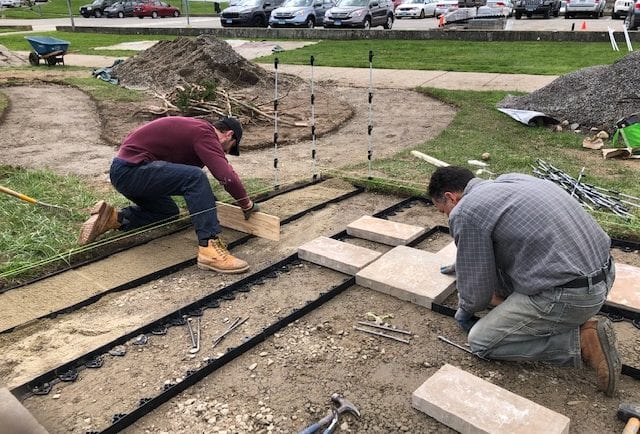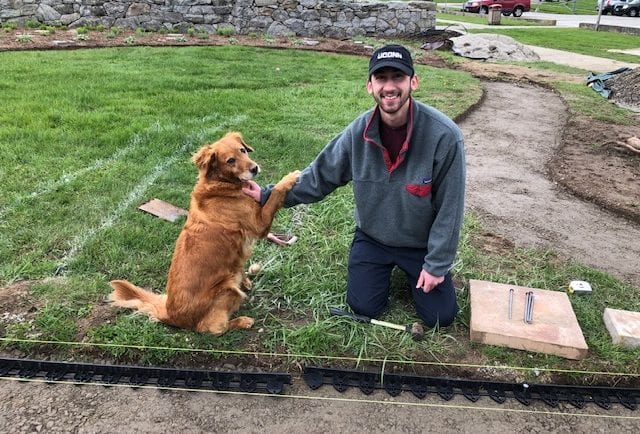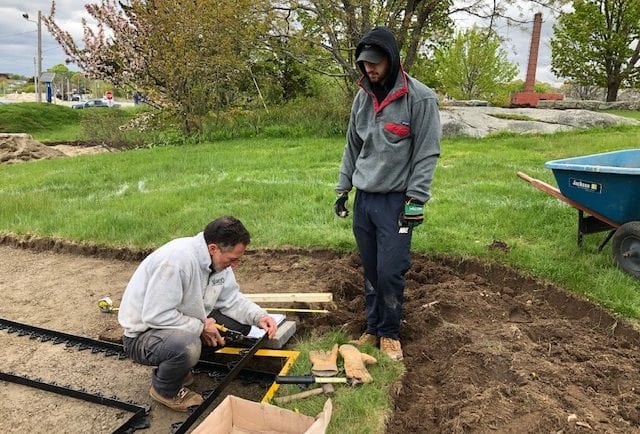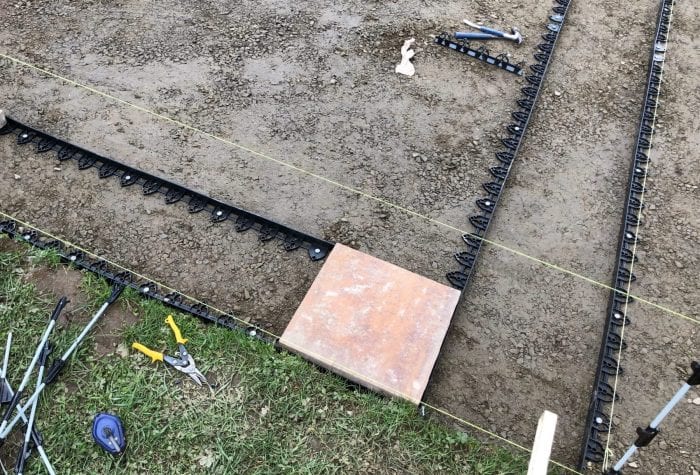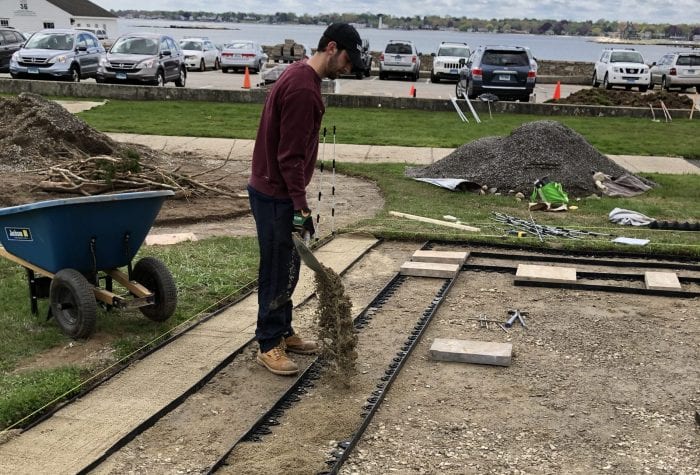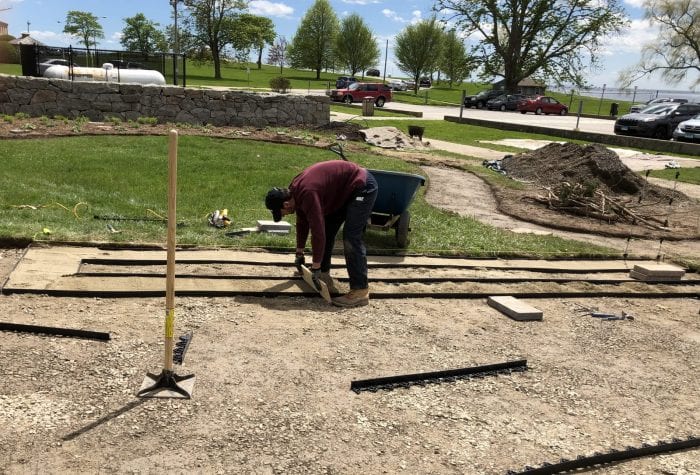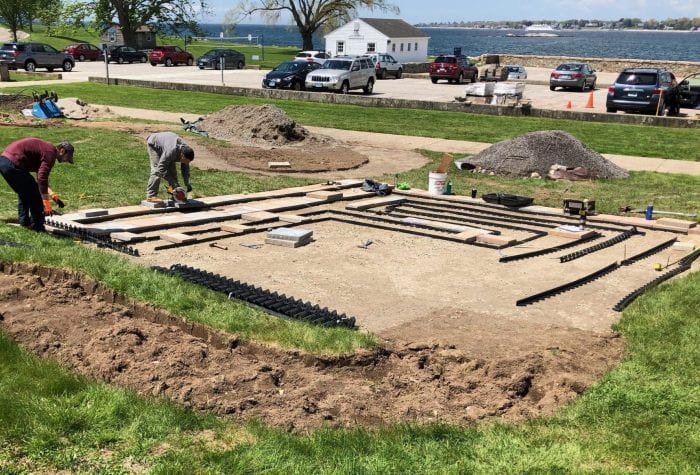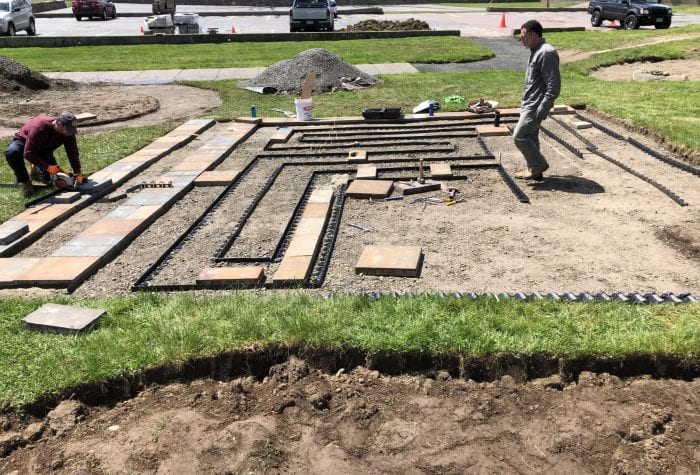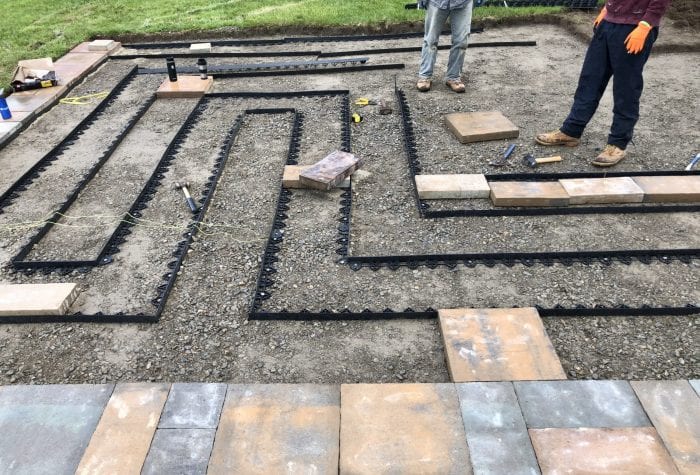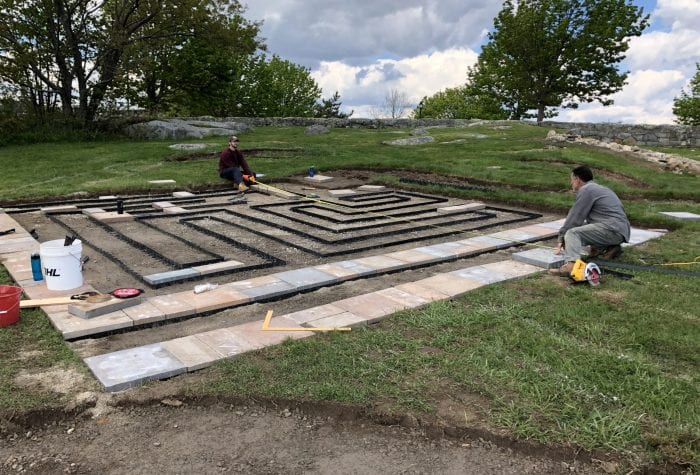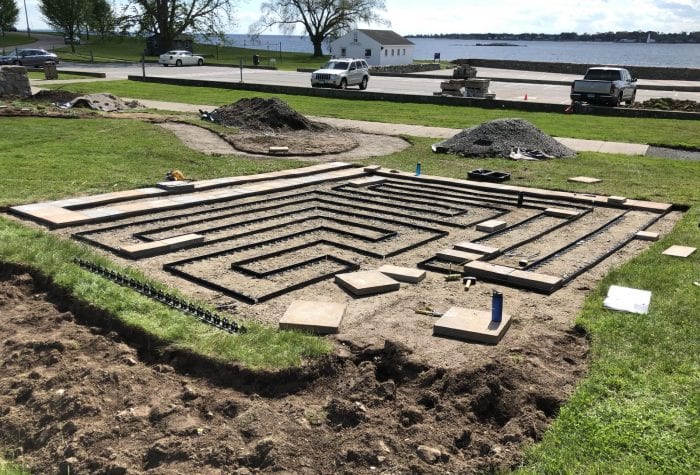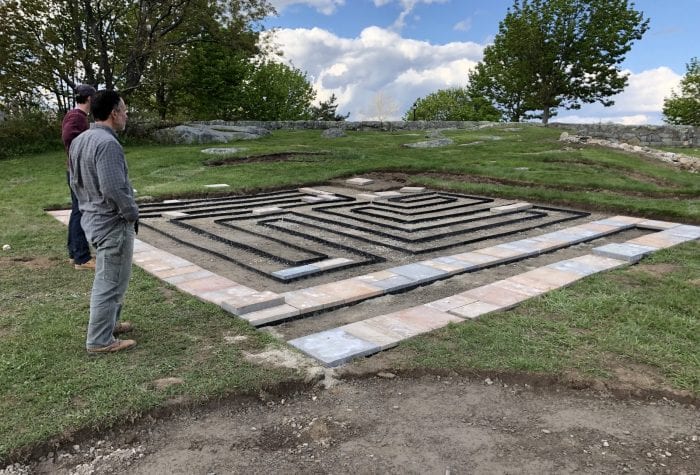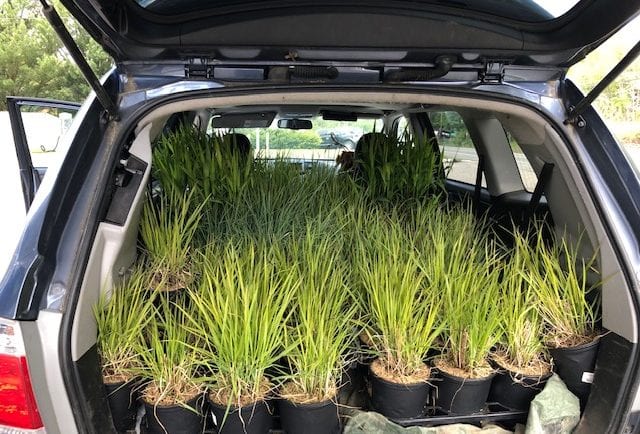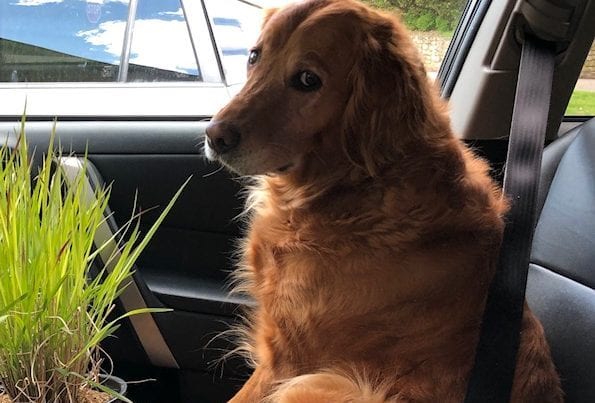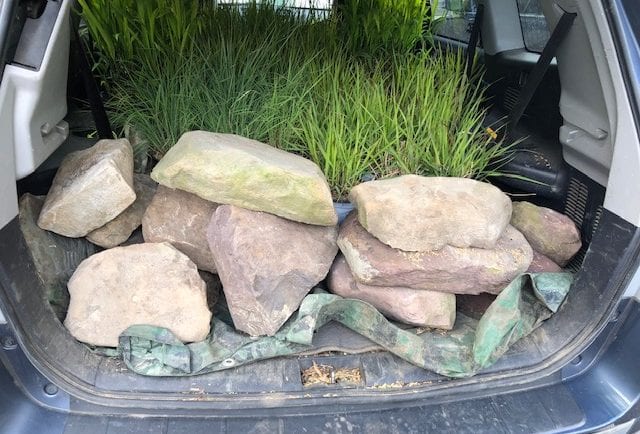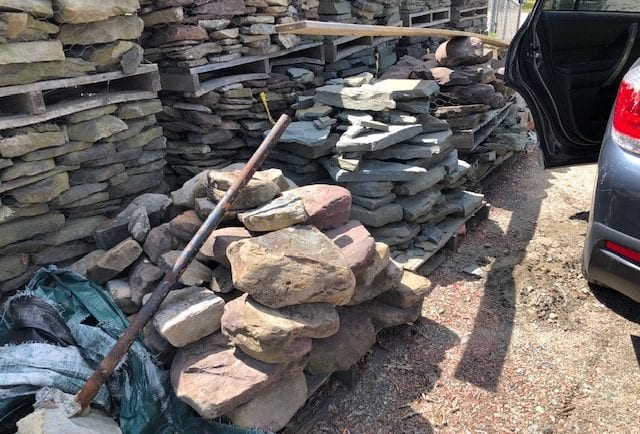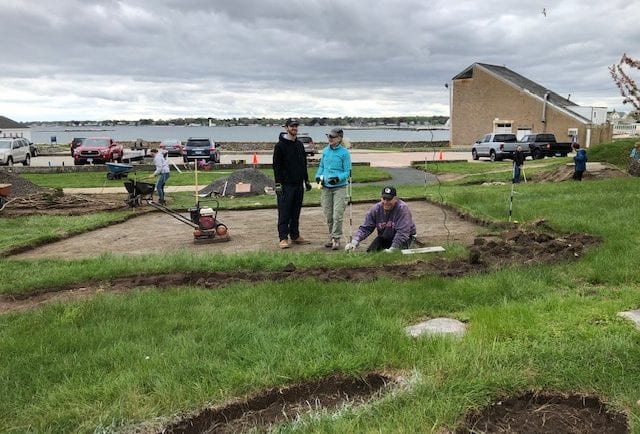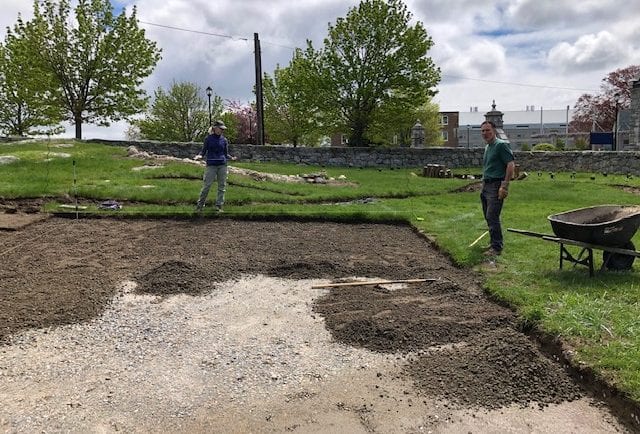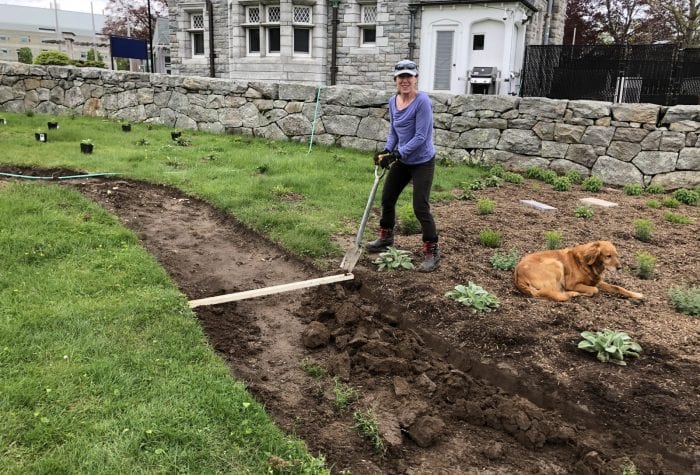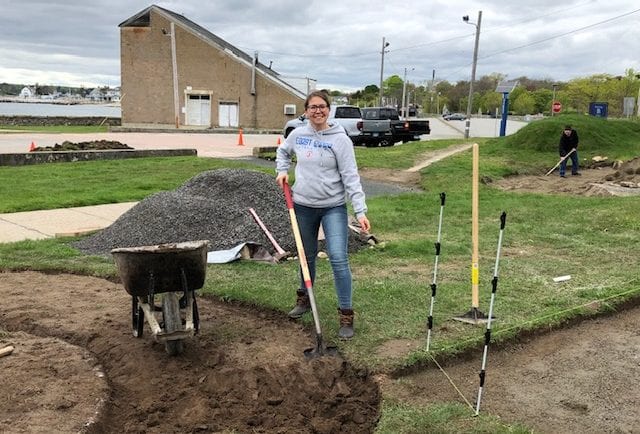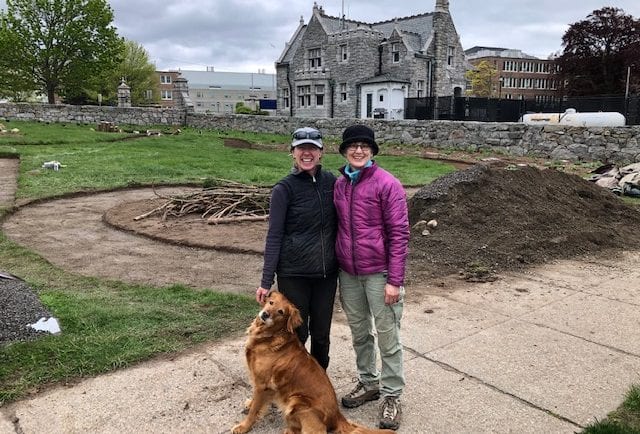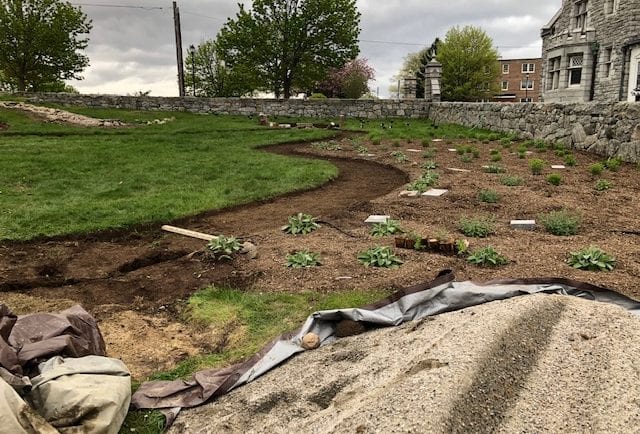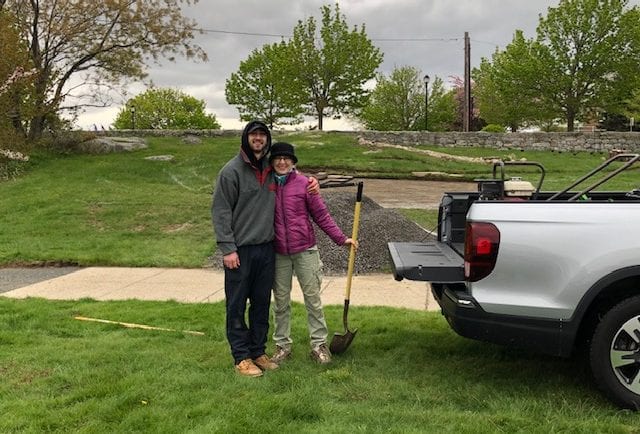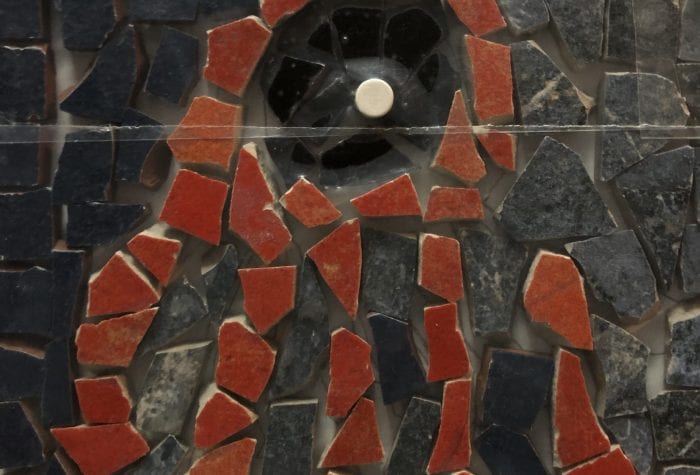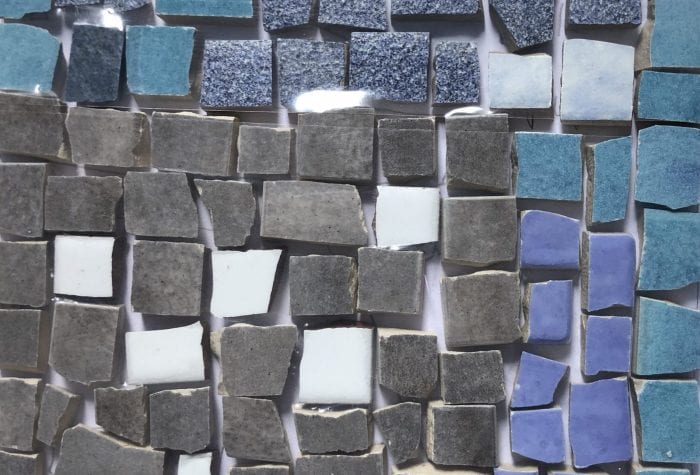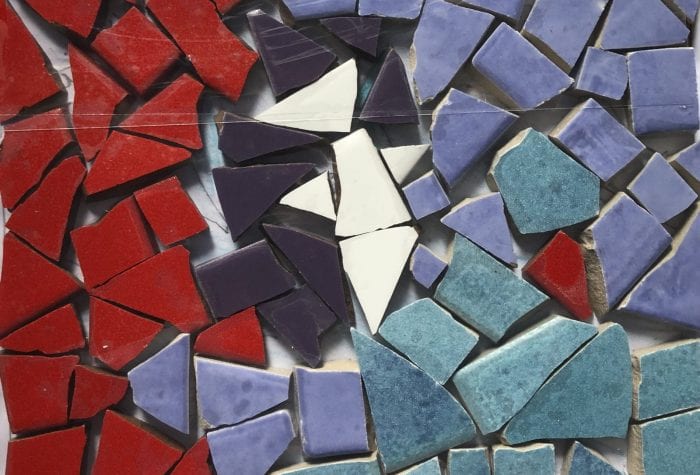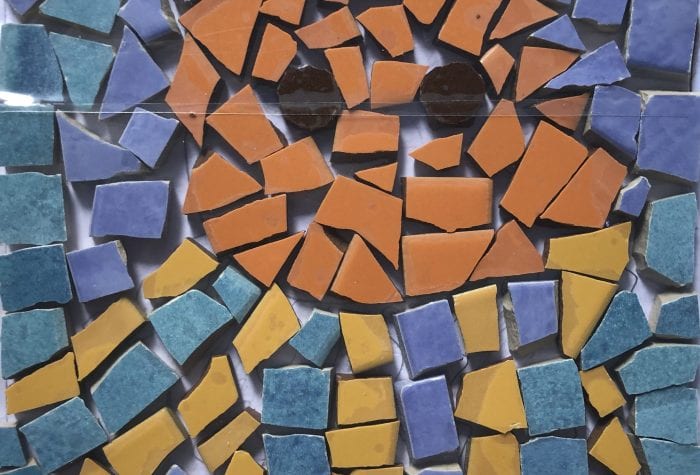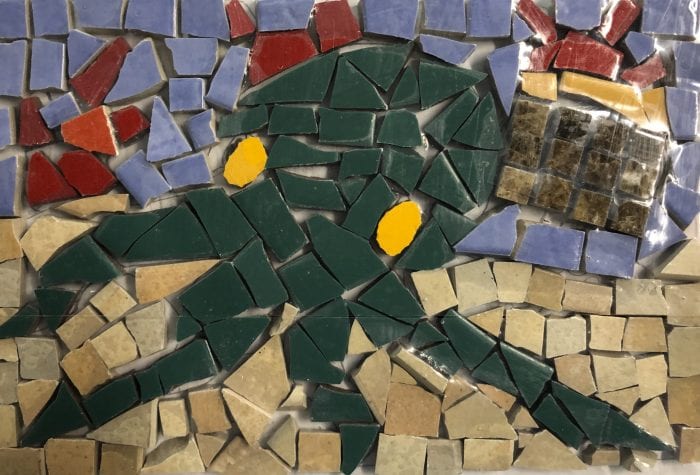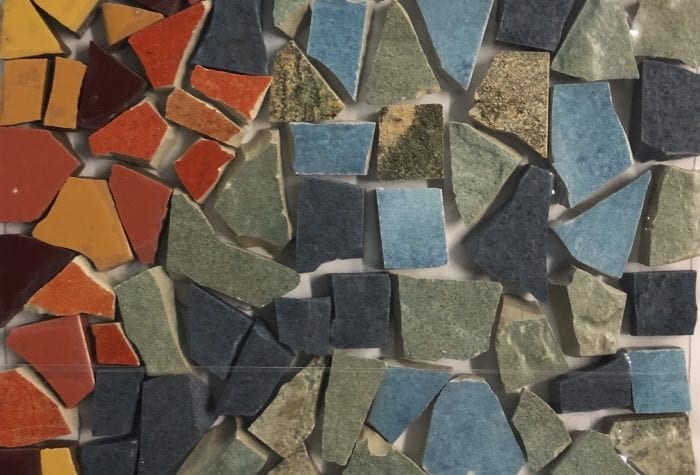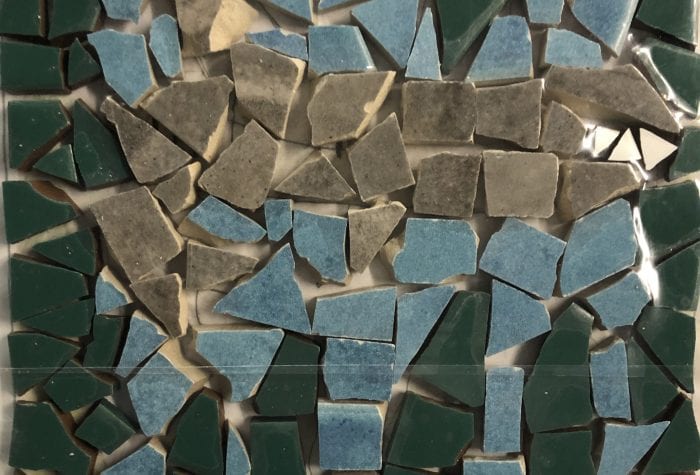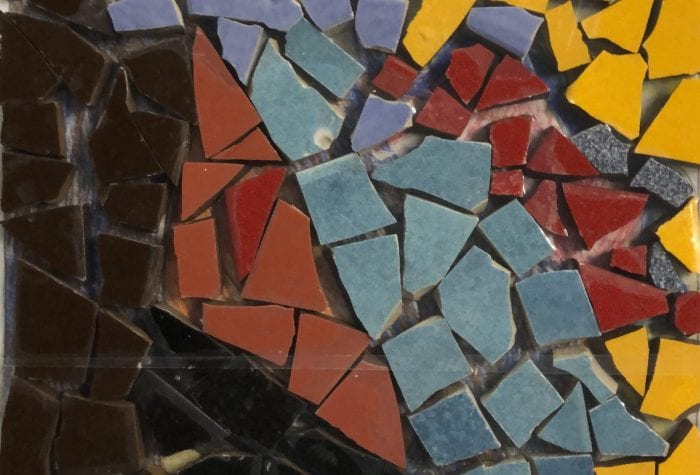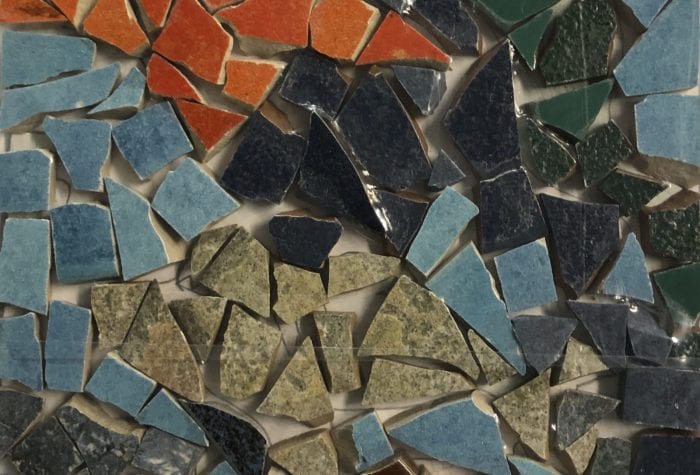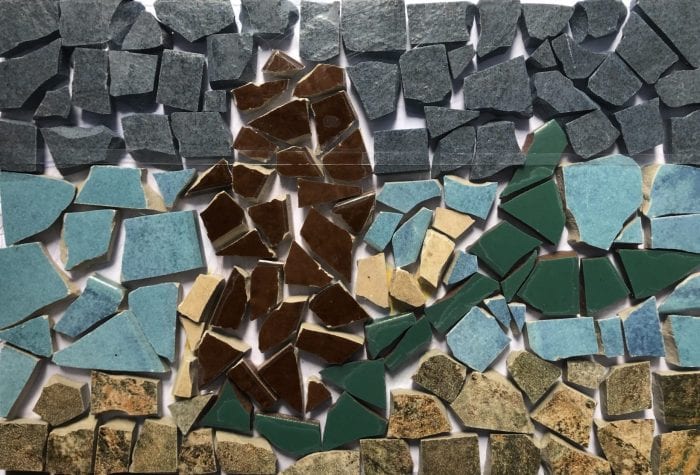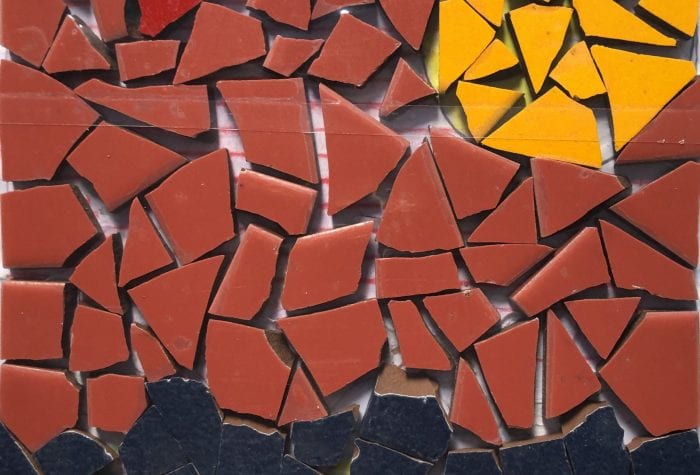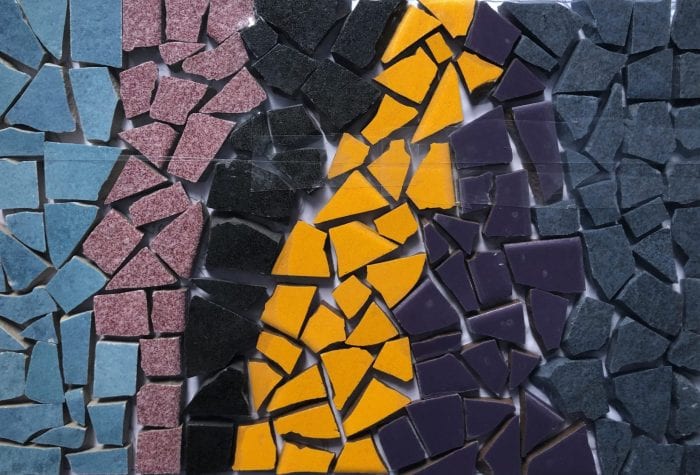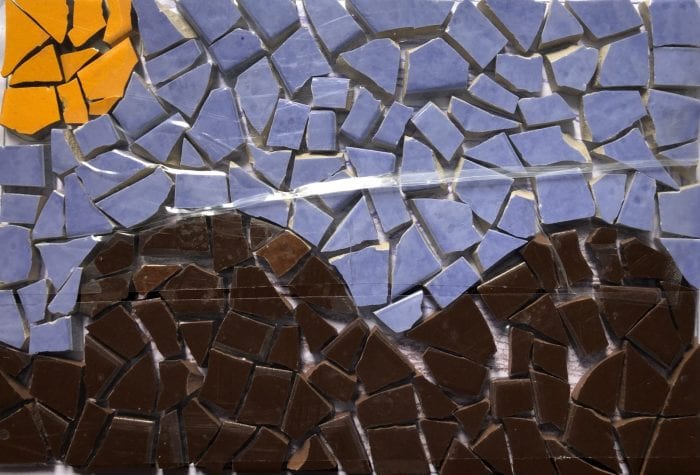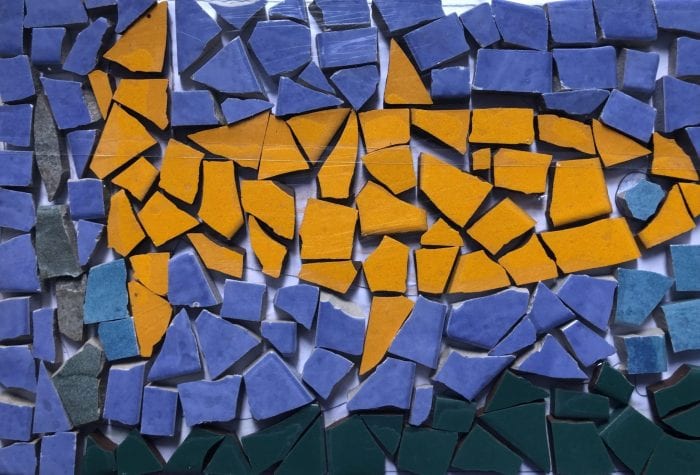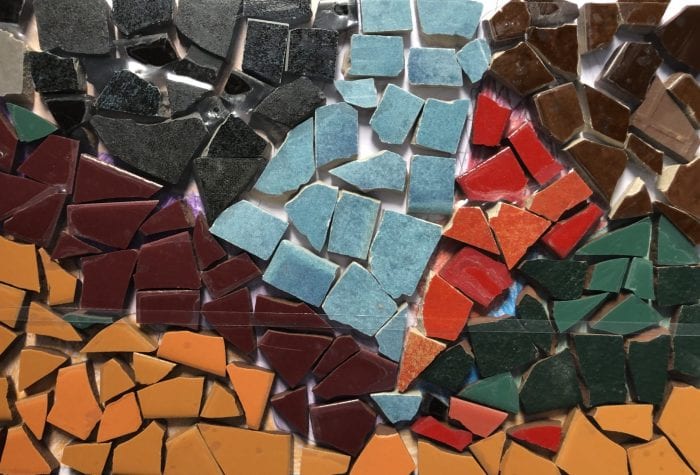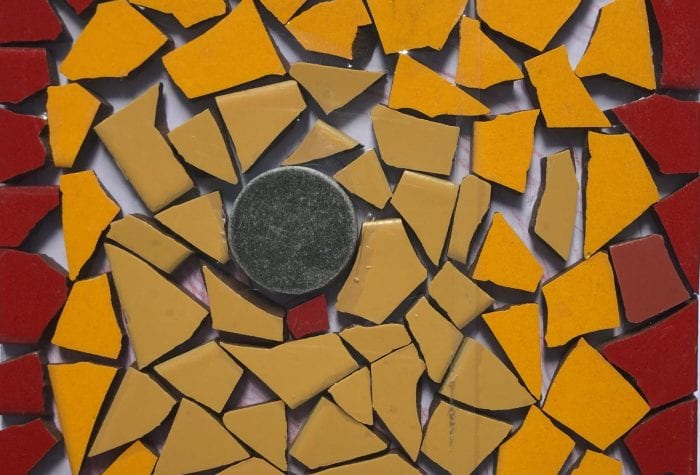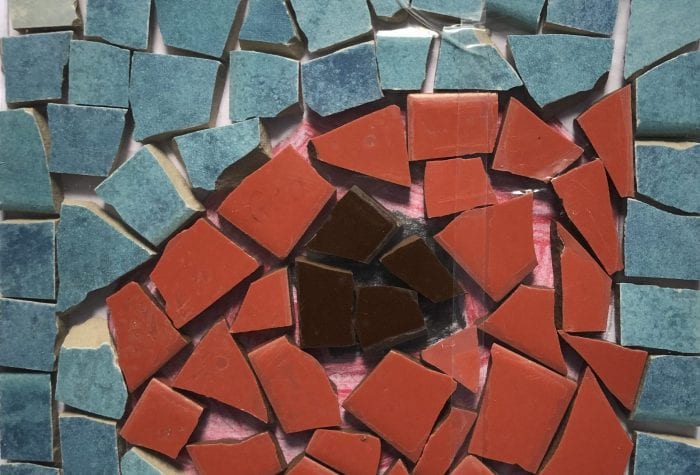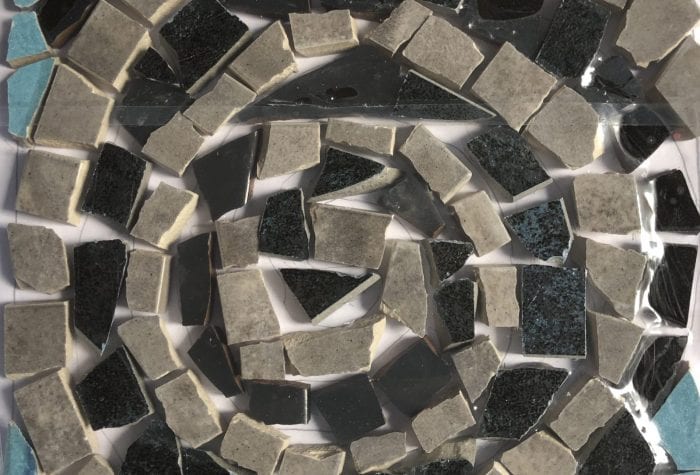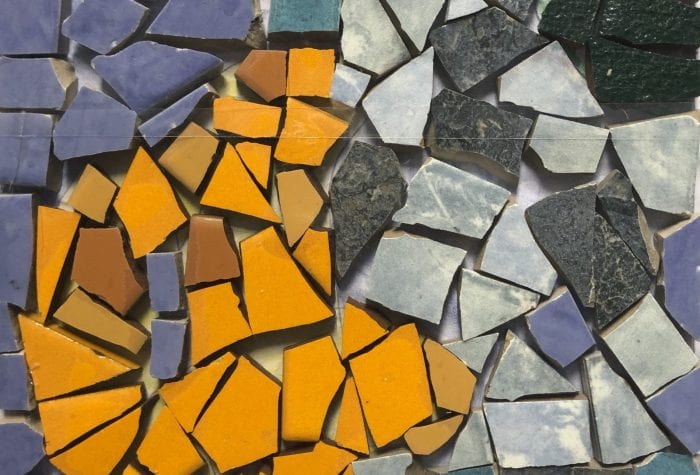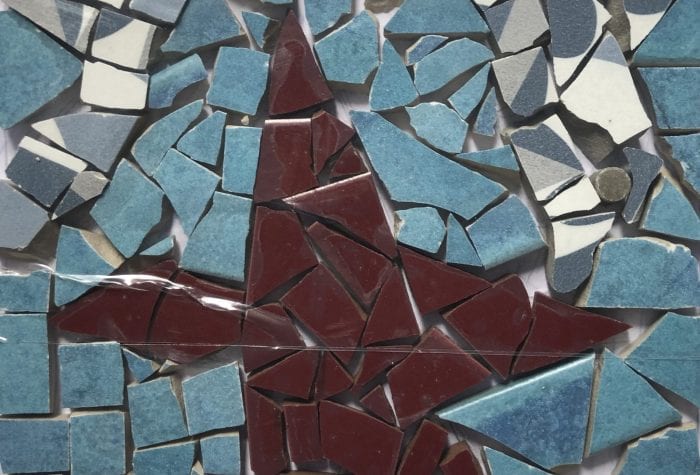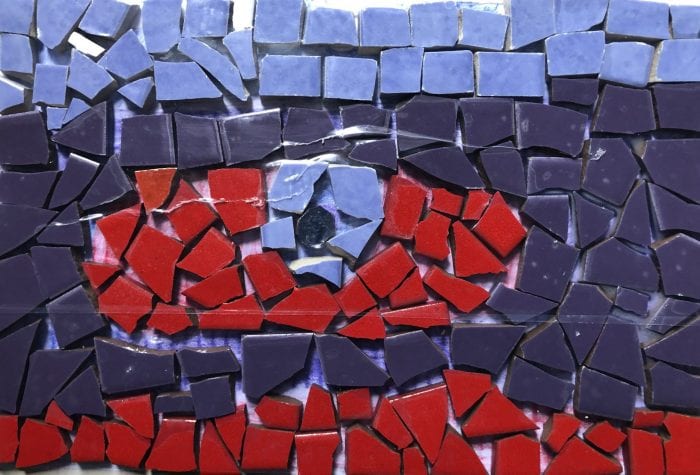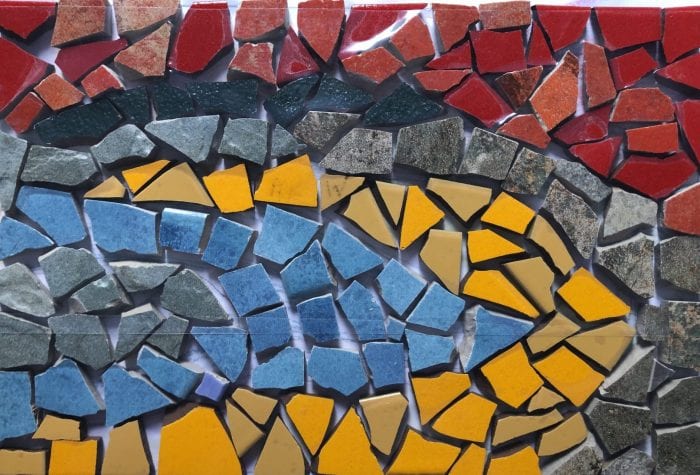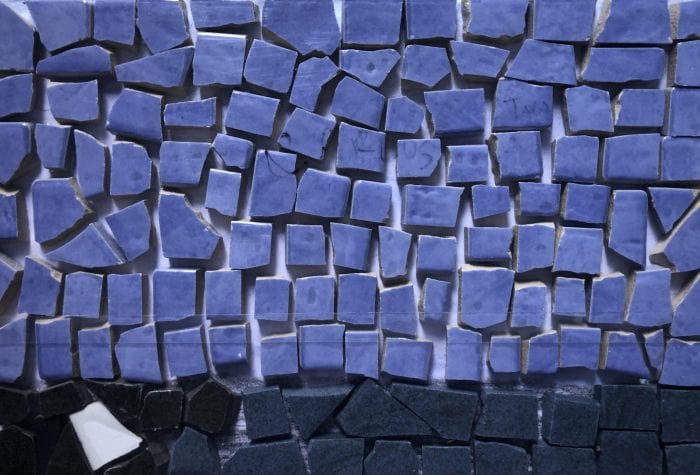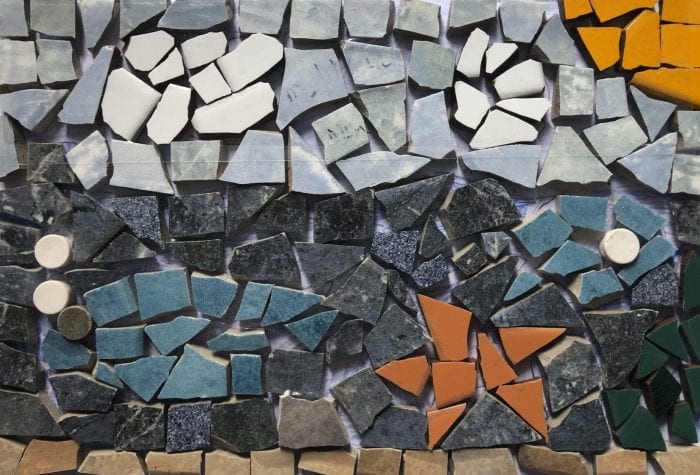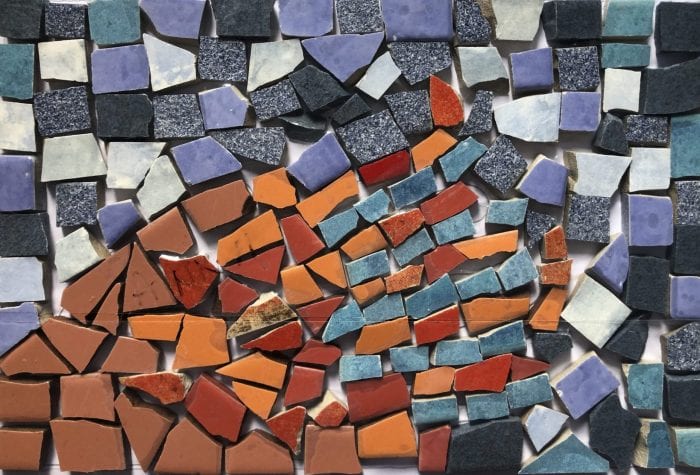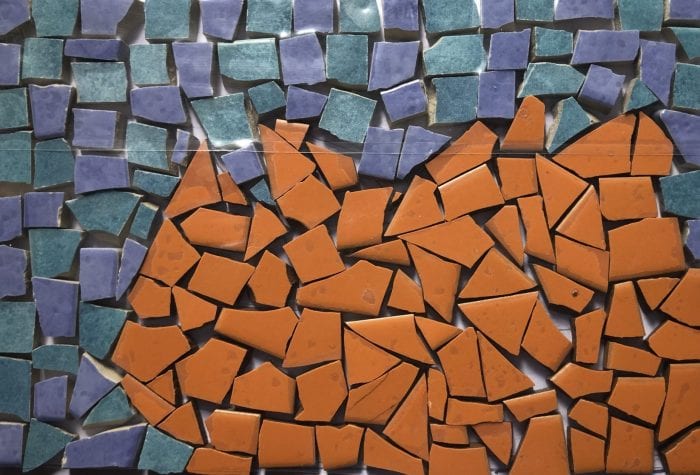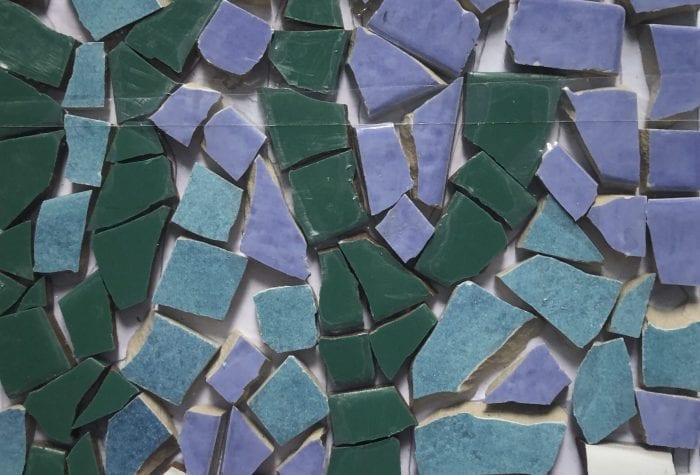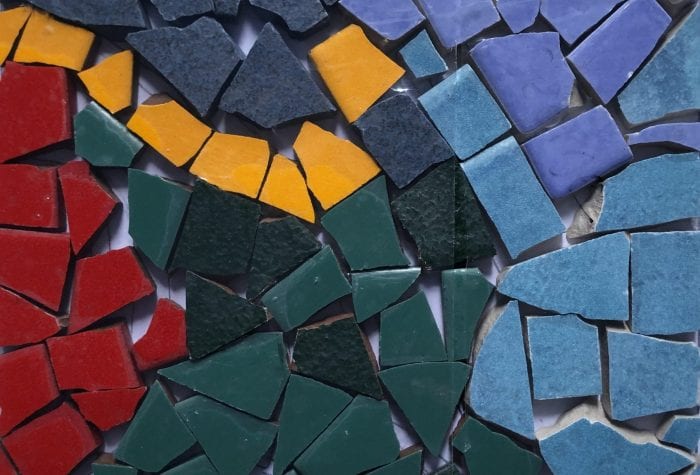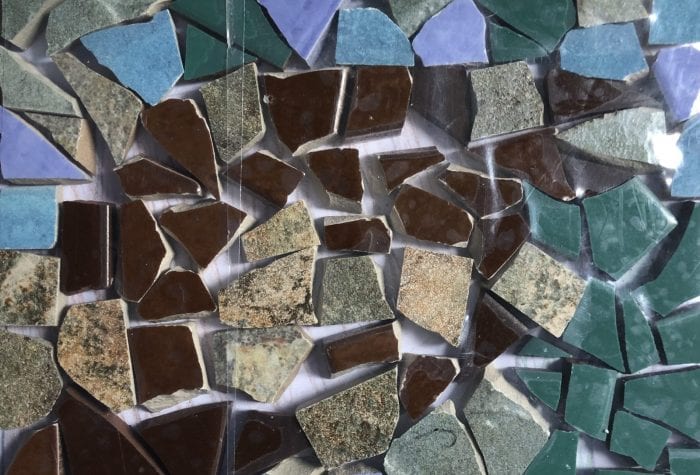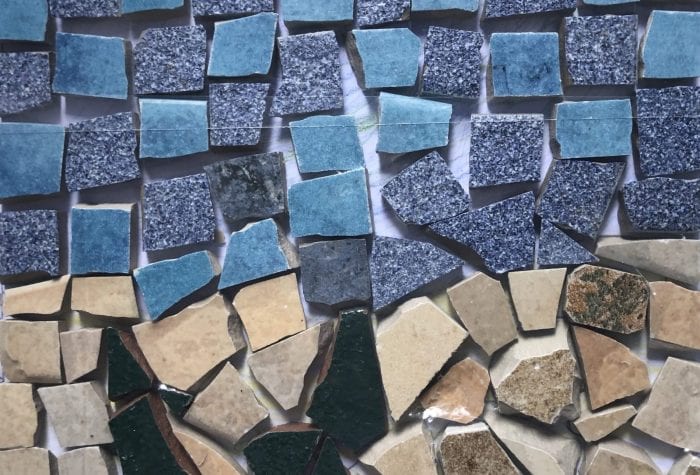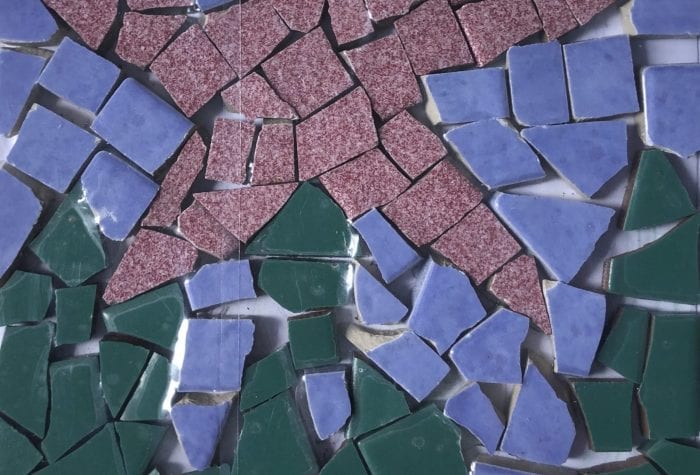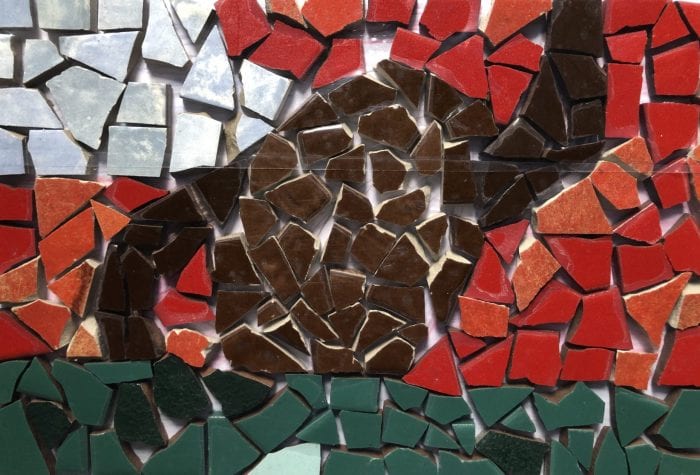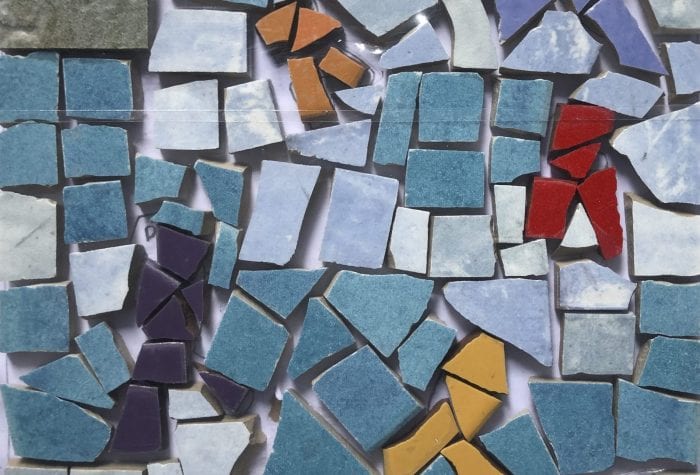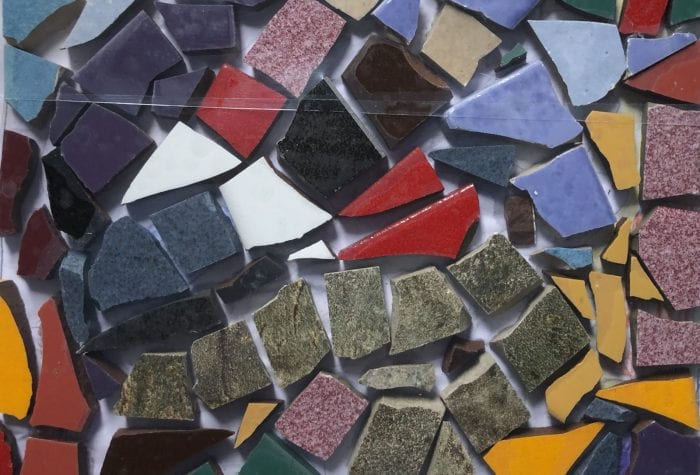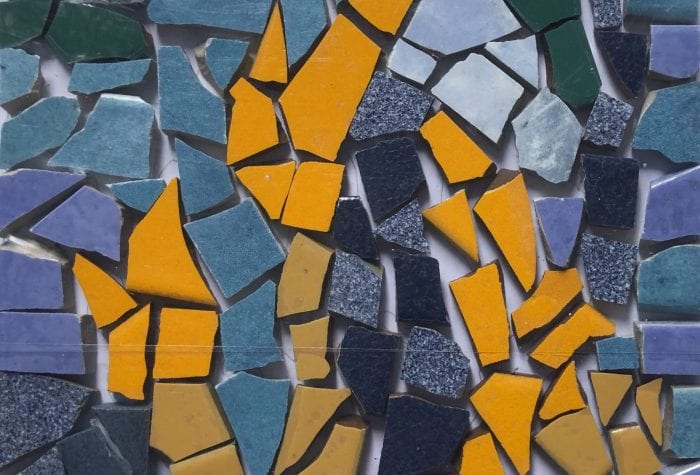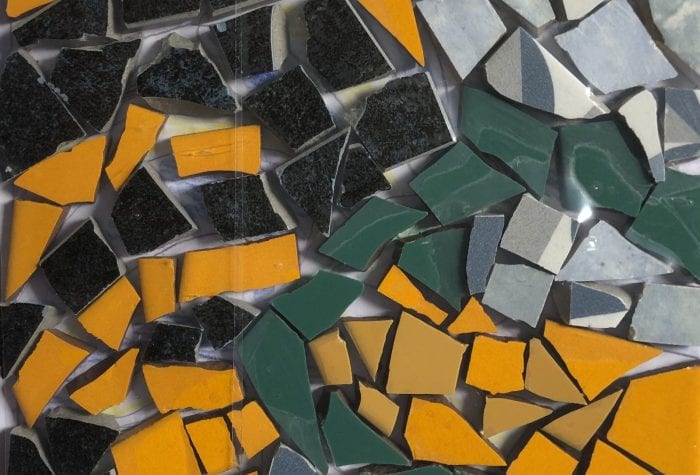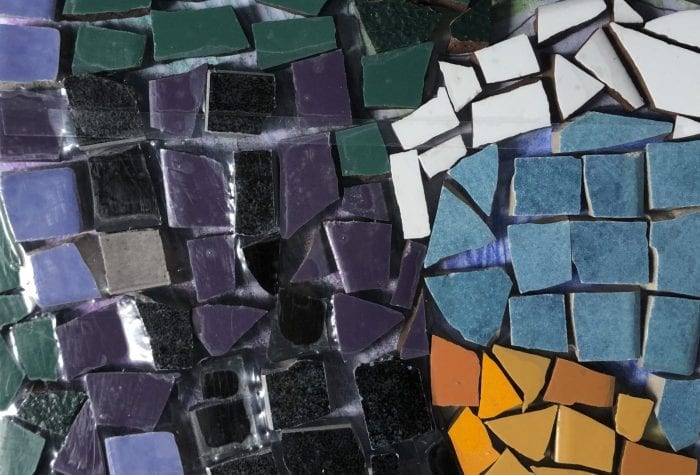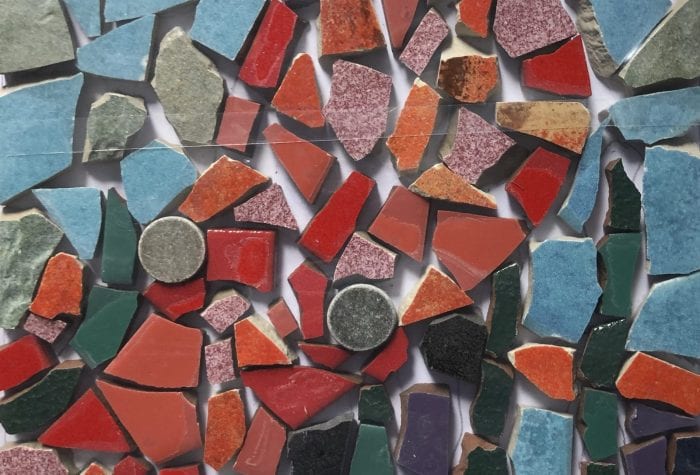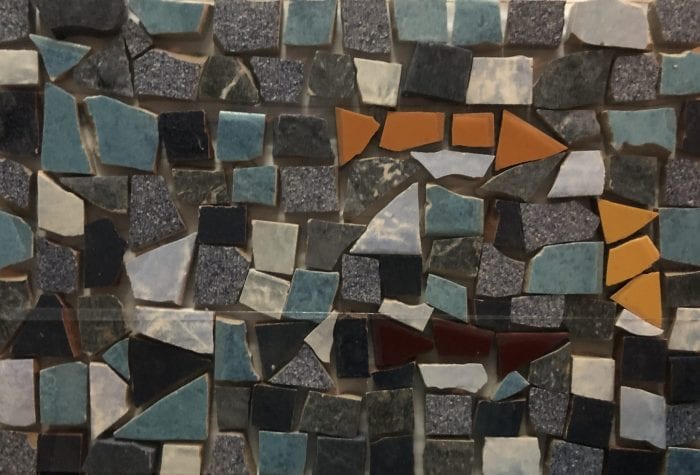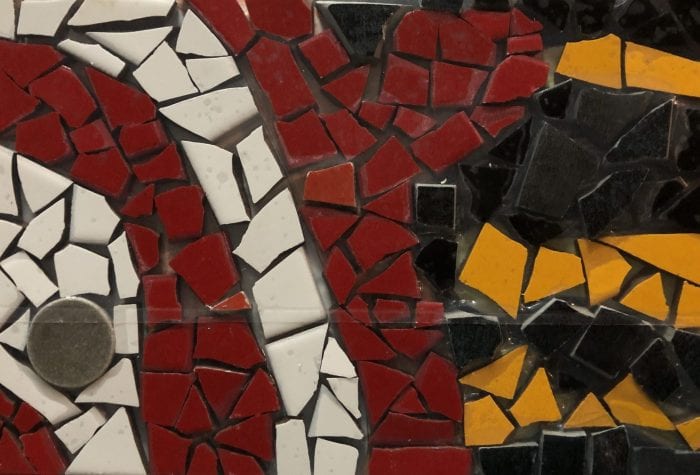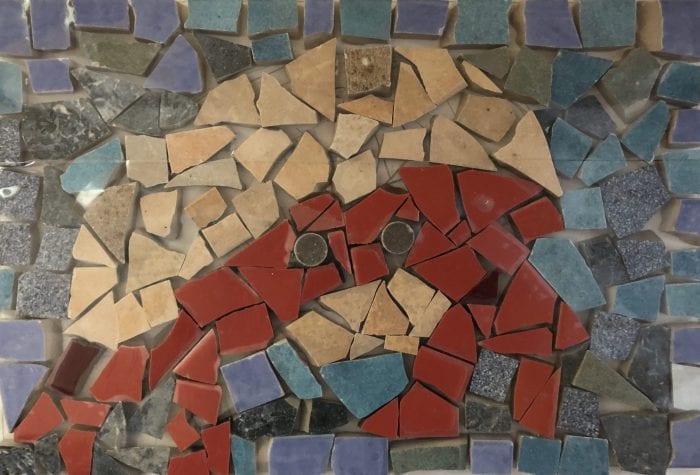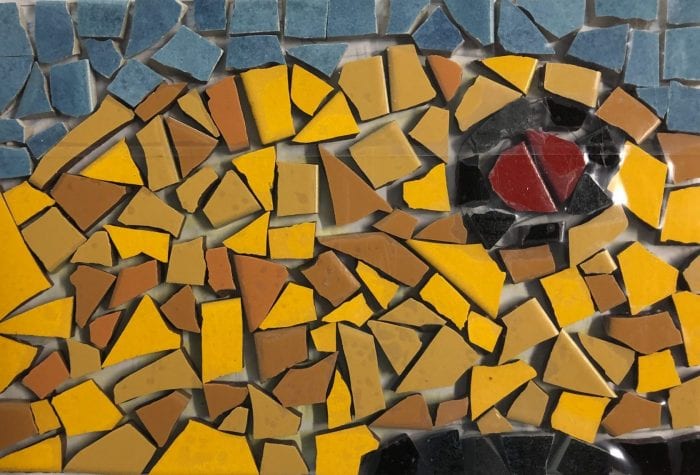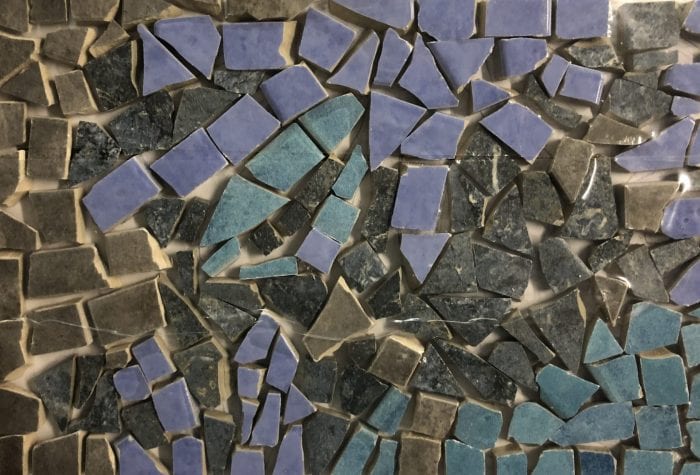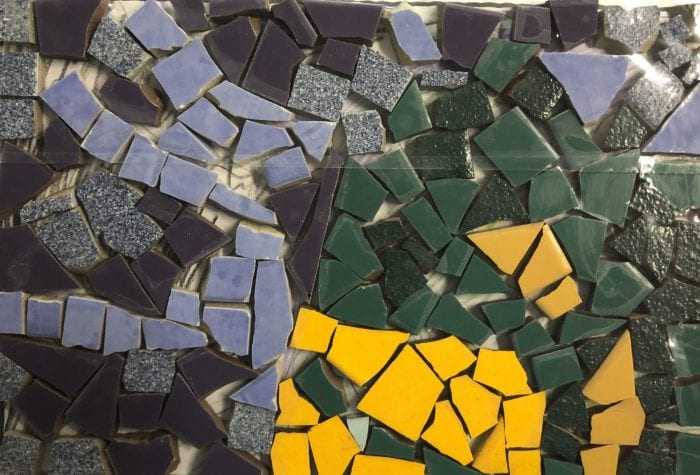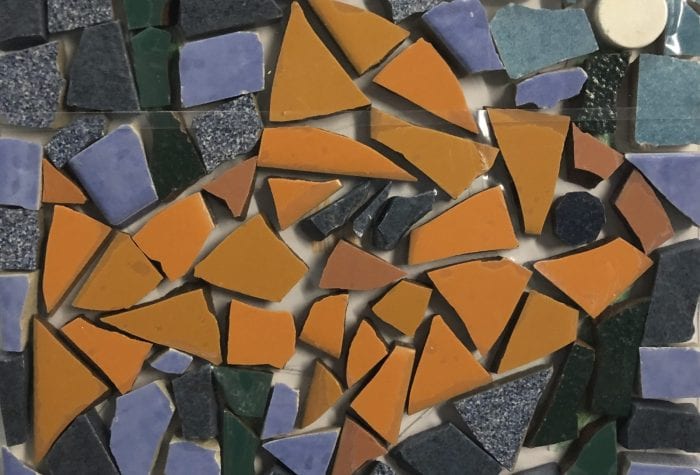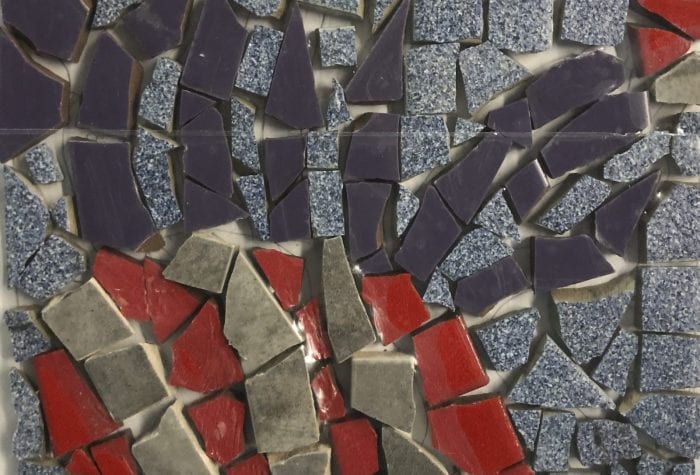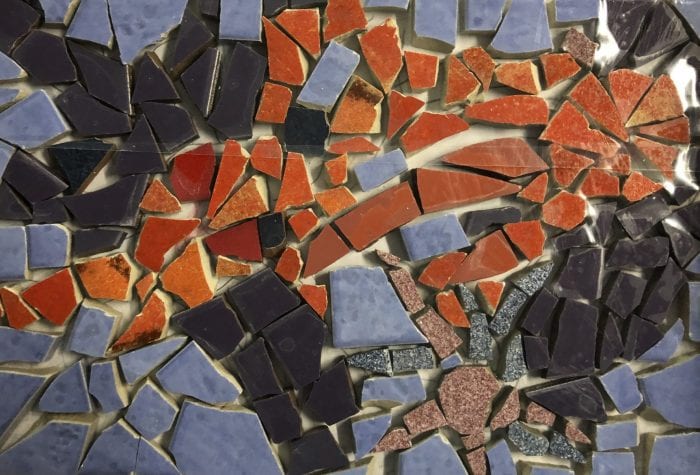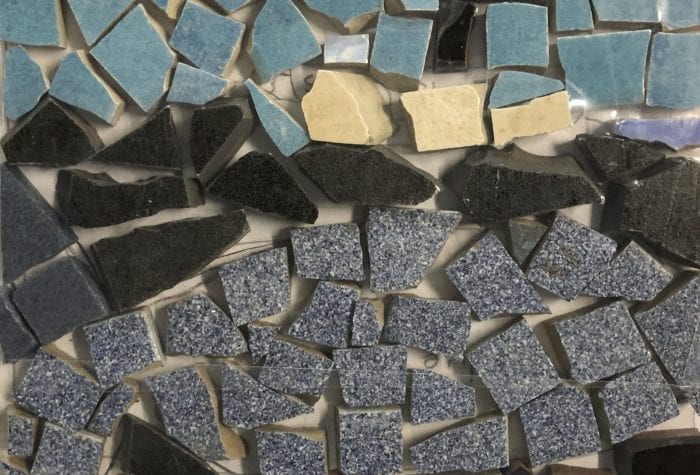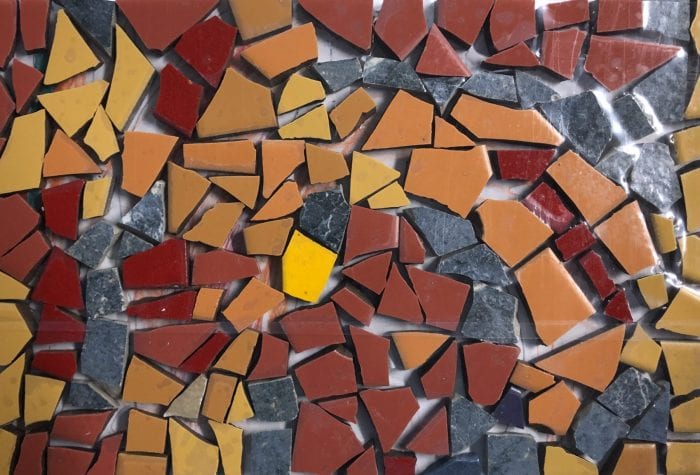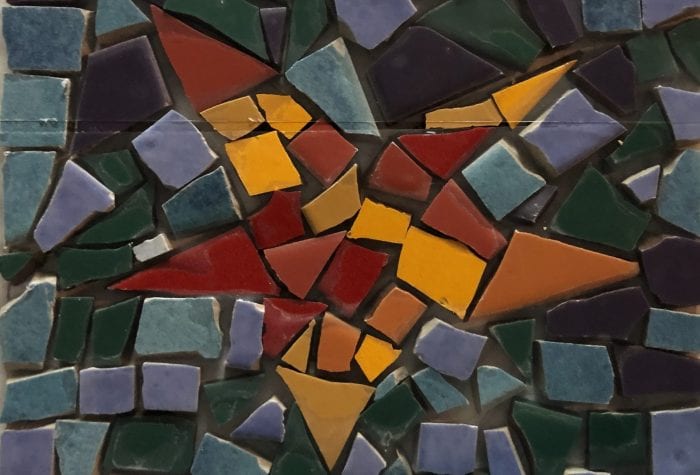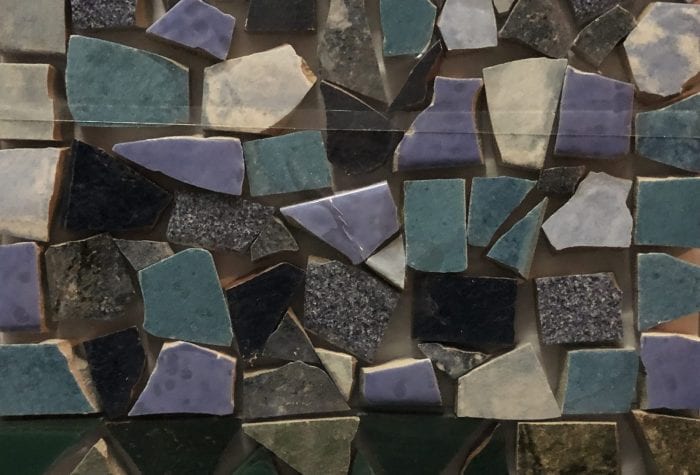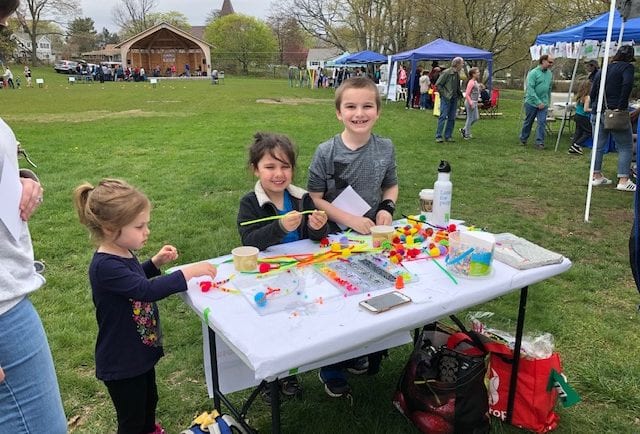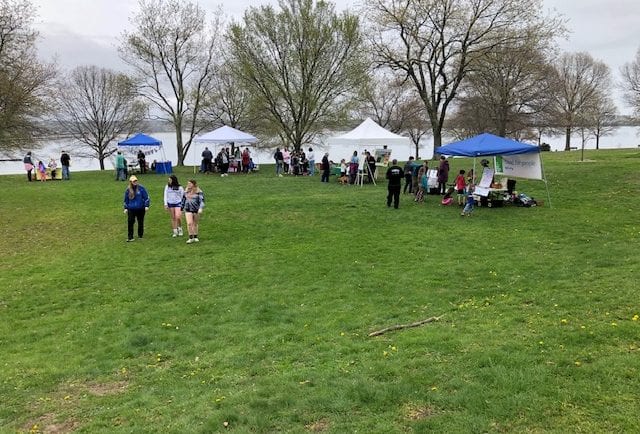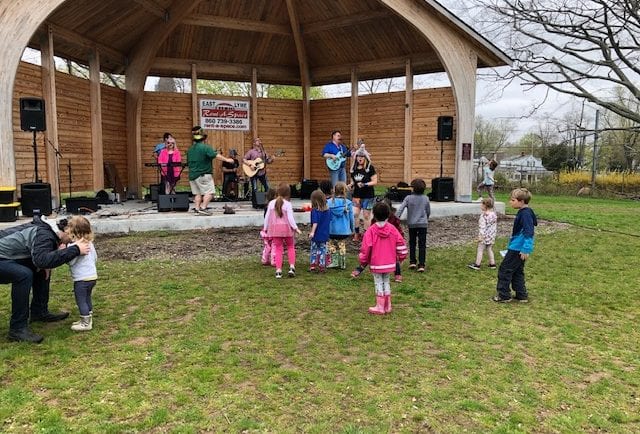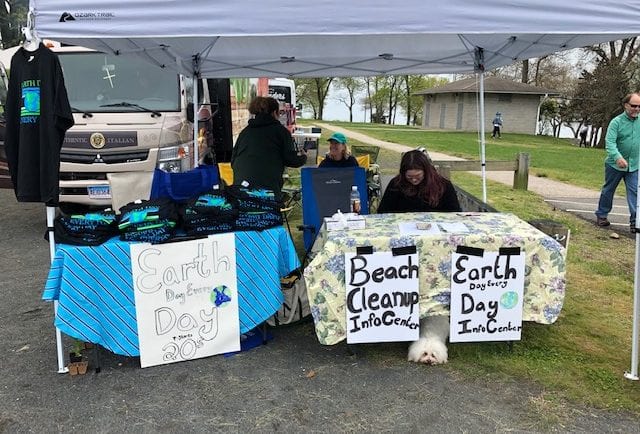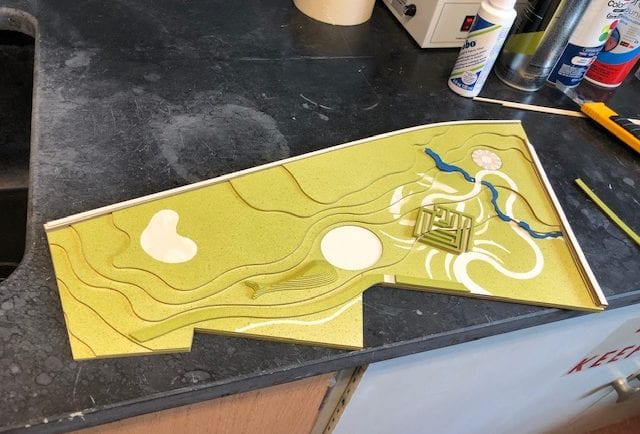Friday, May 17th, was awesome! The day was filled with wonderful people volunteering to help build the garden. In the photos, you can see the joy of giving and being a part of something bigger than ourselves and together we accomplished so much! Mary and Jeff stopped by my house to get rocks for the waterfall so I could fit Lulu and her friend Gretchen (a young shepherd-mix that I was dog-sitting) in my car. Lulu once again gave up her sacred passenger seat, now filled with more plants, and moved to the backseat, also filled with plants. Jeff, a Pfizer employee, took the “day off” from work, which really meant an 8-hour day of alternate work, setting 119 seventy-five-pound pavers into the labyrinth edging. Now that is a dedicated spouse, a true friend, and a socially conscious individual!
While Jeff put more personal hours toward getting a 40-hour individual grant from Pfizer for the garden, another group worked toward a Pfizer grant in which a team of five or more employees must work a total of 15 hours together. Anna Silberberg, also a Pfizer employee, set up this volunteer event and requested help from her co-workers. We had about eight volunteers show up! A Coast Guard crew of volunteers also arrived on that afternoon: the three who had helped that Tuesday and the eight who’d had to postpone. We had a half-dozen wheelbarrows and a dozen or so shovels. Everyone got to work and the day was a blur of activity.
Volunteers helped transport and lay the pavers into the labyrinth, dig flat stones in around the waterfall so children can safely enter the falls, and plant native grasses around the falls and in the meadow. Other volunteers got to work moving heavy road-base aggregate to build up the main pathway through the garden. The Coast Guard got that herculean effort done in no time by setting up a wheelbarrow brigade.
Tiffany, a member of the Coast Guard and an amateur photographer, took some wonderful photos. She captured the essence of volunteerism and why we do it. One of the great benefits to organizations, corporations, and small businesses, is the team building that results from this type of group volunteerism. A project like this gets people out of the office and into the “trenches,” working together over a short period of time to accomplish a goal. This cooperative effort yields teamwork, problem-solving, learning, and laughter, not to mention the satisfaction of accomplishment and service.
I just want to take my hat off to organizations like the Coast Guard and Pfizer who allow, and even encourage, their employees to participate in volunteerism. Pfizer even provides grants for its retirees to participate in community service projects. That they believe so strongly in this ideal sets them apart and makes them a great example for other companies to follow. The Coast Guard Academy also actively engages their members and challenges them to get as many hours as possible. As an American, I am so proud of their commitment and as a citizen, I am so thankful for their support. We will all benefit from the hard work these volunteers put in, especially our children, and through this type of service we are truly becoming a stronger community. Thank you Coast Guard and Pfizer volunteers!
